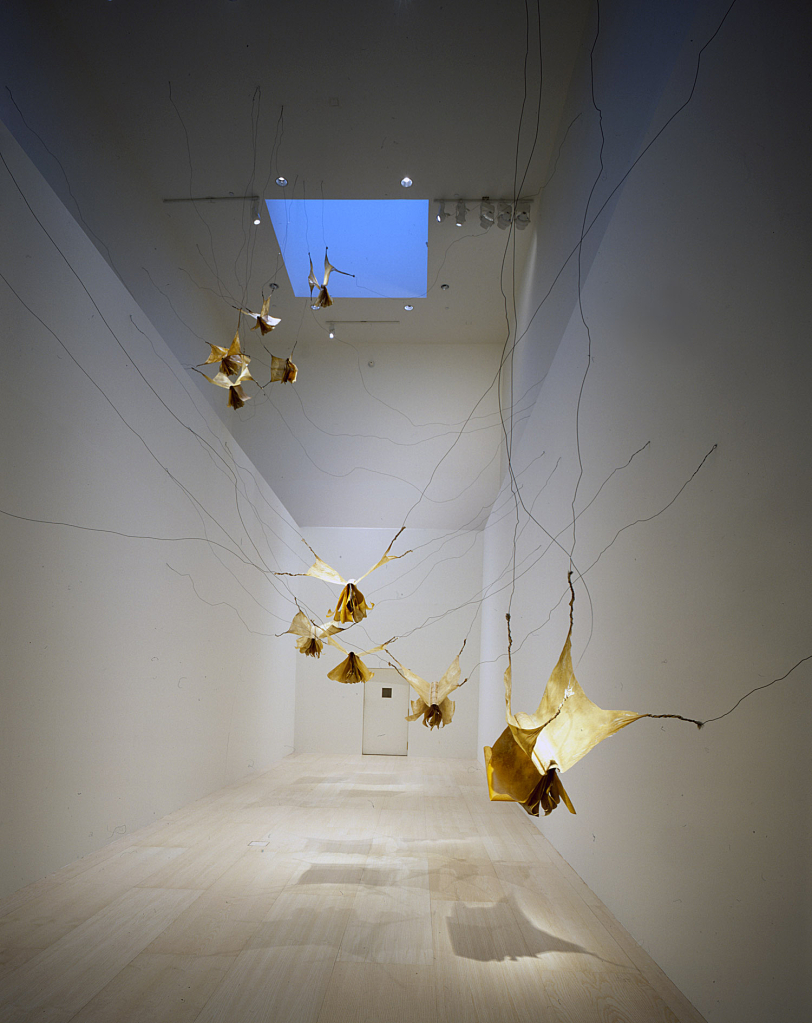The Tower Wounded by Lightning: The Impossible as a Goal
02.01.2000 - 05.07.2000
The Tower Wounded by Lightning: The Impossible as a Goal deals with man's struggle to overcome his limitations and take physical and intellectual possession of the uncharted territory that lies beyond him, of a world repeatedly imagined but from which—in the natural order of things—he is barred. As Jacques Lacan said, "The path of the individual lies between two high walls of the impossible," and this exhibition chronicles some of the attempts made to demolish these walls by adventurous souls driven by the hard-won conviction that only unattainable goals are worth the effort.
The impossible as a goal; the will-individual or collective-to conquer the invincible; the desire for divinity, to reach God and become like Him; the urge of some groups to embark on titanic, fanciful, or doomed tasks that lead to ruin and madness.
This tragic awareness of its own limitations is what gives the human identity its heroic stature as it struggles to break down the frontiers between the possible and the impossible. After initial anxiety, the tension produced when the finite, limited, diffuse Individual compares himself with the infinite, unlimited and unique Universe, is transformed into creative energy, a force that eventually transmutes into baleful disillusionment at so many broken dreams.
All this has been dealt with repeatedly throughout the history of Art, in representations of the Tower of Babel by Benozzo Gozzoli and Brueghel the Elder; Piranesi's prison interiors, depictions of spirals and labyrinths; Vladimir Tatlin's monument to the 3rd International, the paradoxes of René Magritte; Frank Lloyd Wright's helicoidal architecture; Robert Smithson's entropic obsessions; Walter de Maria's lightning field; and Daniel Libeskind's 'broken' architecture. Literature has also taken an interest in the issue: Mary Shelley's Frankenstein, Honoré Balzac's Frenhofer, Franz Kafka's palace/office/prison, and Jorge Luis Borges' library.
But it is not just a question of art capturing the idea of the impossible as a goal in its images. Artistic creation itself could well be seen as embodying in some basic, primordial way the drama of man's permanent dissatisfaction, of his urge to go beyond what is seen, of creation that never actually comes to any conclusion. Through what he does, the artist demonstrates, in T. W. Adorno's words, the "positive existence of what is irremediably lost" that artist continues tirelessly to pursue.
The Tower Wounded by Lightning shows works by a group of artists who—as far as possible—have confronted different types of impossibility, including the achievement of absolute assurance, knowledge, eternity, the rejection of death and the creation of life: all attempts to, as Charles Baudelaire put it, "open the doors of an infinite that we love, but which we have never known."
Because impossible works can never be successfully concluded, being unfinished is part of their very nature. But not all inconclusiveness is a result of such impossibility. Other motives, clumsiness or weariness for example, can lead someone to give up the fight to achieve an objective in mid-task; but it remains true that any attempt to achieve the unattainable is bound to be incomplete-although that does not necessarily imply failure.
The paradigm that provides the exhibition with its starting-point is the myth of the Tower of Babel. The image of the tower exemplifies all man's attempts to overcome the limitations that Nature (whether divine or biological) has imposed upon him. Like any other work of man, building the Tower requires, at first, absolute assurance and self-belief. Later, just looking at the Tower as it grows produces a sense of Pride that can all too easily degenerate into Arrogance. And it is at this point where Failure (Lightning), in the guise of Confusion, or Disappointment, in the guise of Disillusion, may appear; this is the point where things are likely to fall apart, only for work to begin on a new "tower" (another ambition, another goal, another illusion) somewhere else.
The Tower Wounded by Lightning: The Impossible as a Goal includes works created by Leopoldo Ferrán (Irún, 1963) and Agustina Otero (León, 1960), who live and work in Irún, Baztán and Paris; Francisco Ruiz de Infante (Gasteiz, 1966), who lives and works in Paris; Mabi Revuelta (Bilbao, 1967), who lives and works in Bilbao and Pamplona; Javier Pérez (Bilbao, 1968), who lives and works in Barcelona; and Gabriel Díaz (Pamplona, 1968), who lives and works in Madrid. Apart from the Ferrán-Otero team, which has provided four works, each artist has contributed three works of art specially conceived for this exhibition and for the Guggenheim Museum Bilbao.
Javier González de Durana
Curator of the exhibition
Fly, Fly You Damned Ones, if I Dont Catch You the Devil Will (Volad, volad malditos, que si no os cogiere yo, os cogiera el diablo), 1999–2000
Goats skin and iron
Variable dimensions
Collection of the artists

